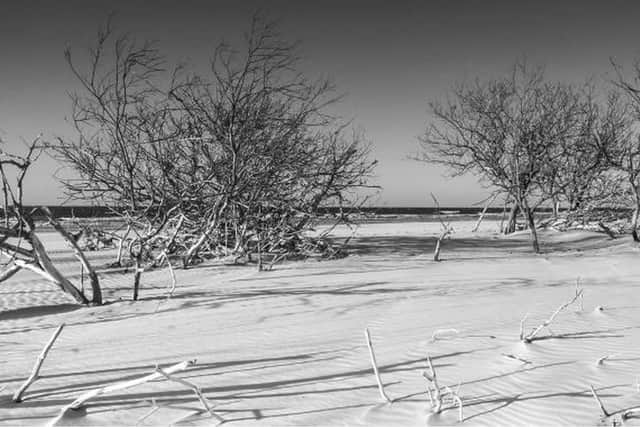Tiny Scottish village that disappeared in a sandstorm to be revisited
The history and folklore of Culbin in Moray is to be explored in a new project being led by Robert Gordon University and Moray Libraries.
Culbin disappeared in The Great Sand Drift of 1694 with many theories and superstitions at play as to why tragedy struck the coastal community.
Advertisement
Hide AdAdvertisement
Hide AdThen natural disaster was linked to a divine intervention with some viewing the storm as a possible punishment for whisky smuggling or even playing cards on a Sunday.


What is known is that the uprooting of marram grass for thatching, and possibly the cutting of coastal turf for fuel in the 17th century, caused the sands to start shifting, with the heavy storm of 1694 likely leading to the village being overwhelmed and abandoned.
An exhibition on Culbin will open later this month at Elgin Library, with historians, storytellers and crafts to explore the village that was lost in the storm.
Philip Davidson, Interim Principle Librarian, said: “This project with Robert Gordon University is really exciting for local storytellers, historians and residents who live near the original site of Culbin village.
“The exhibition gives us a fantastic opportunity to explore life in Moray before 1694 as well as allowing the creative freedom to imagine who might have lived in Culbin, what life was like for them and where they went after the sand drift forced them out of their homes.”
Research by Forestry Land Scotland earlier found that Culbin was likely made up of five farms and 735 acres of cultivated land.
However, the wider Kinnaird Estate, had a great house, a church, thousands of acres of land and orchards and up to 16 associated farms.
Over time, a richly embellished story surrounding the storm claims that the young Kinnaird laird was playing cards late one Saturday night and, despite being reminded, insisted on playing past midnight, boasting he would play on even if the Devil was one of his partners.
Advertisement
Hide AdAdvertisement
Hide AdAfter a clap of thunder the Devil appeared, and the game went on so long that Kinnaird failed to notice the sand engulfing the estate.
Some also believed the sandstorm was punishment for villagers hiding smugglers in the dunes.
In the decades that followed the great drift, the sand kept shifting with remains of the original estate becoming exposed. It is said a dovecote, chapel and even parts of a manor house came into view once again. Some say the top branches of the laird’s orchards appeared once again, with the trees bearing the most excellent of fruits.
Professor Peter Reid, from The School of Creative and Cultural Business at RGU said: “It is fantastic to be working closely with Elgin Library to bring the fascinating story of the disappeared village of Culbin to life through this dynamic exhibition. Robert Gordon University is committed to preserving the distinct cultural heritage of the North east and to enhancing the visitor experience and tourism offerings in the region.”
- Culbin, the Disappeared Village will open at Elgin Library on Saturday, February 19 and will run until March 16 as part of Scotland’s Year of Stories 2022.
A message from the Editor:Thank you for reading this article. We're more reliant on your support than ever as the shift in consumer habits brought about by Coronavirus impacts our advertisers.
If you haven't already, please consider supporting our trusted, fact-checked journalism by taking out a digital subscription.
Comments
Want to join the conversation? Please or to comment on this article.
